And our first trip down the Green was in 2011. But in September. We played bocce on the big sandbank at the inside curve of Spanish Bottom. Yes we had that much room and that little water. It was September though.. We did get snowed on that last night.
Me I am fond of Jasper. Around mile 7. Has wonderful waterfalls too.
I have yet to camp on an actual river’s edge sandbar on the Green, preferring canyon and ledge sites, even if some are similarly sandy sites further off or above the river. At low water I was tempted by the massive sand expanse at Valentine Bottom; a good square mile of clean, flat sand a few feet above the river, stretching from mile 29 all the way around the bend for a mile downstream. A mile of wind fetch blowing sand would be a b*tch though, and zero shade. Sandbars, meh.
I am so impressed with how much time went into giving such great information.
We ain’t even got started yet. My favorite paddle-up-a-side-canyon sites:
Three Canyon/Trin Alcove (mile 90, river right). Easy landing & launch areas, some promise of clean filterable water up canyon, room for at least a dozen tents on either side of the canyon. Cottonwood shade and as visually stunning as any canyon anywhere along the river. As a top end site, a scant 7 miles downstream from Ruby Ranch, Three Canyon is not to be missed, even if it is campground full.
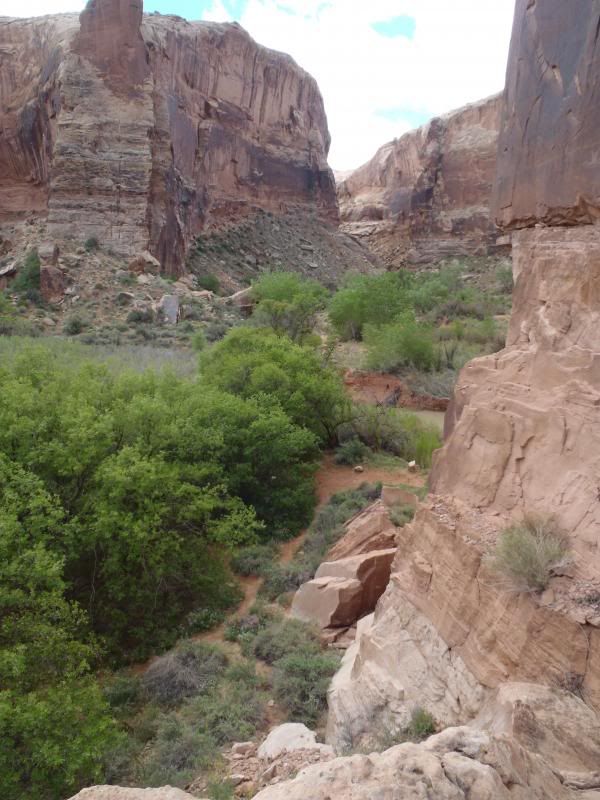
Slaughter Canyon/F Bottom (mile 85.5, river right). Room for 4 or 5 tents with a sandy landing at low levels and a short steep climb at higher water. Not really a paddle-back-into canyon,
maybe if the water is really high, but it is along a straightaway and would be tough to stop and land unless well backwatered. Nice cottonwood shade though.
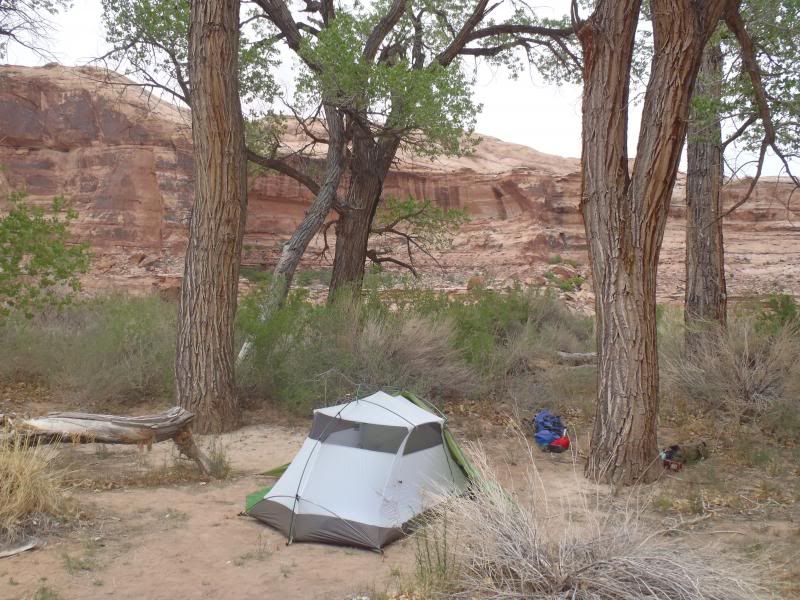
Two Mile Canyon (mile 61, river right). Multiple tent spaces atop a rocky plateau. Cottonwoods and afternoon shade from the western cliff face. (I do appreciate afternoon shade in the desert)
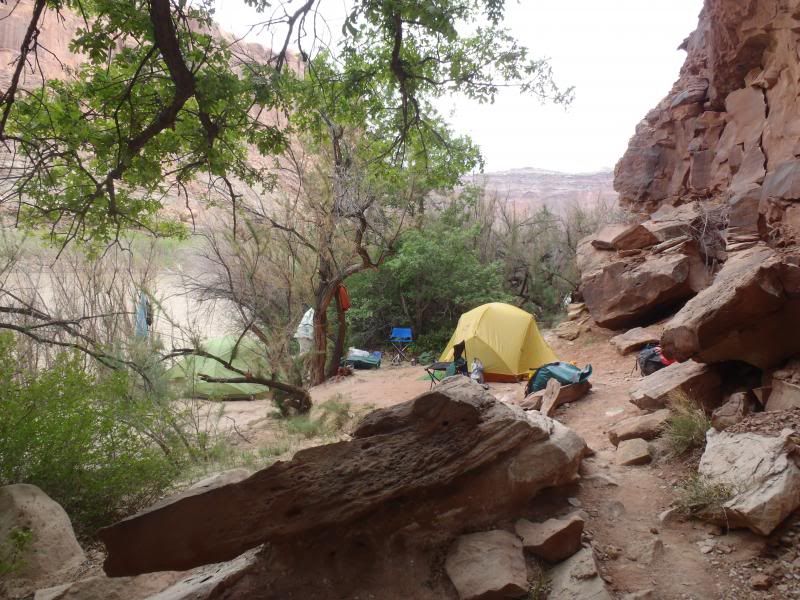
Horseshoe Canyon (mile 59, river right). At high water you can paddle 100 yards up into the canyon and the landing/launch is shallow easy. Not a lot of cottonwood or cliff wall shade though.
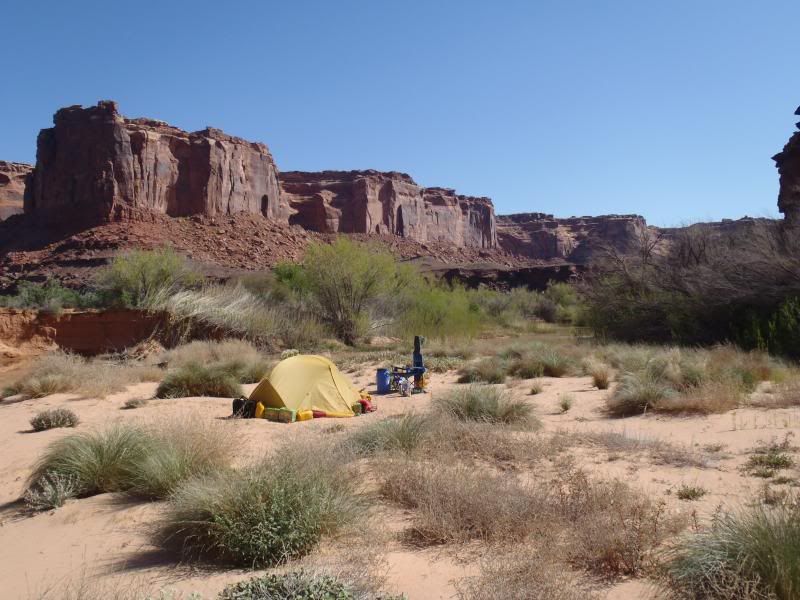
Horsethief Canyon (mile 45.5, river right). Multiple level tent sites on both sides of the up canyon backwater, rock carvings, cottonwood and rock shade. Easier sandy bank landing at high water on the north side of the canyon backwater, better sites on the short steep bank and 50 yard gear carry on the south side, especially at lower water when a shallow bench appears.
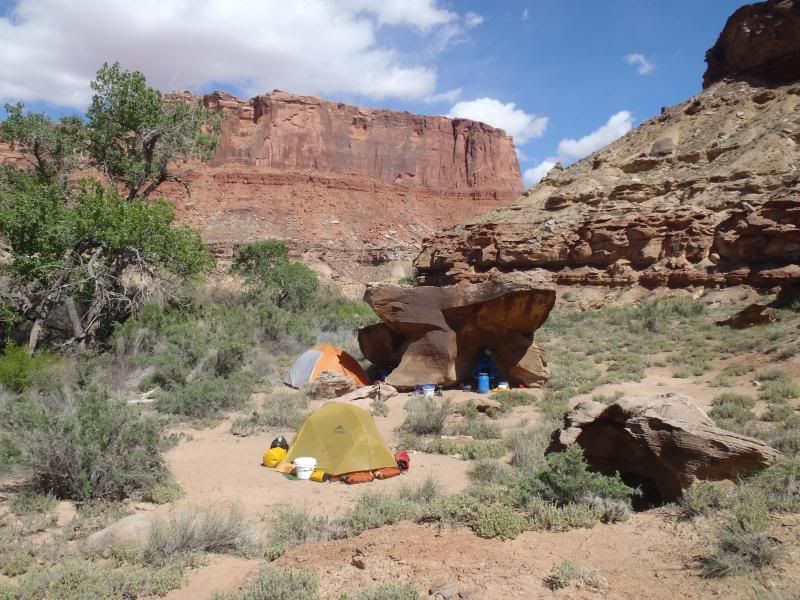
Deadhorse Canyon (mile 20, river right). No photos, I had a bit of a confrontation with an ahole who staked claim to the entire canyon, but there is room back at the end for dozens of tents, and one very nice high vista ledge site at the canyon mouth. Tricky high water exit, especially if you stupidly stop paddling to chat up the folks camped on that ledge. I almost demonstrated my technique for blathering inattentively and flipping against that rock face when the current grabbed me.
Horse Canyon (mile 14.5, river right. . . . I think I have all those danged “Horse” canyons in the correct order). Deep canyon walls on both sides, and perhaps filterable water in a pourover pool a mile back. That one probably needs reasonably high water to paddle back the shallowing approach into the open sand bench tammie-free end.
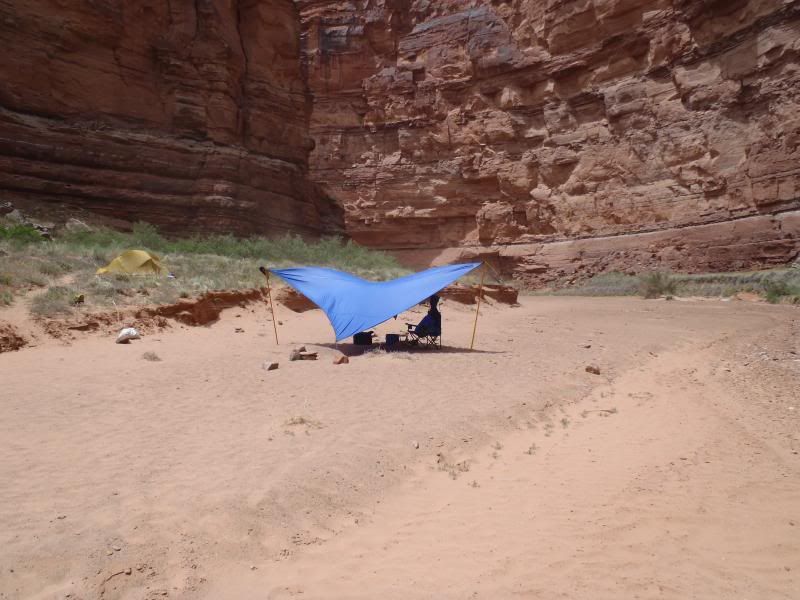
Horse Canyon doesn’t offer much in the way of side hiking, it serpentine twists around for a mile or so and end at an impassible dryfall pool. The lack of day hiking more than a mile may keep the Vibram soled riffraff down. It helps that the “trailhead” (and crappy bankside tent sites) for hiking into the Maze is just upstream at Mile 16.
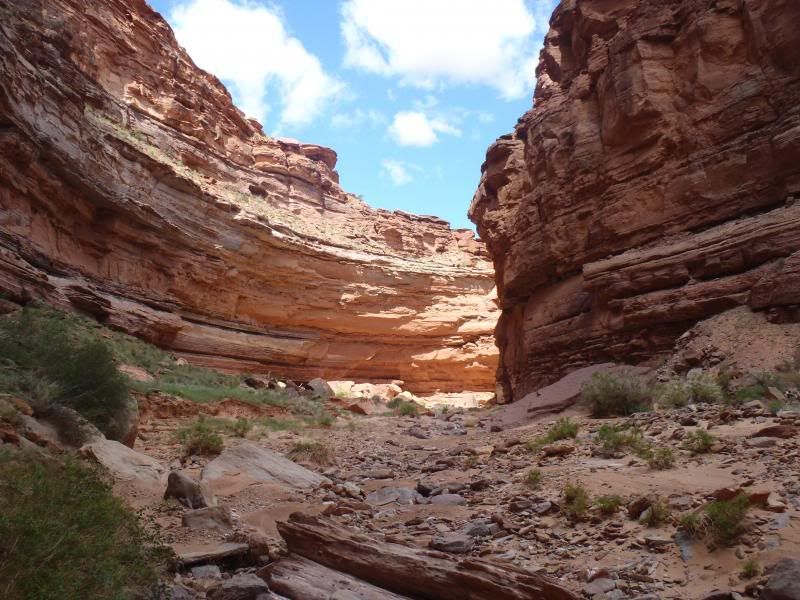

Water/Shot Canyon (mile 4.5, river right). Steep landing, in the current along the outside edge of a turn, and don’t miss the break in the tammies well before the actual canyon mouth. Almost as scenic as Three Canyon/Trin Alcove, but note the end of trip and hiking trailhead site popularity.
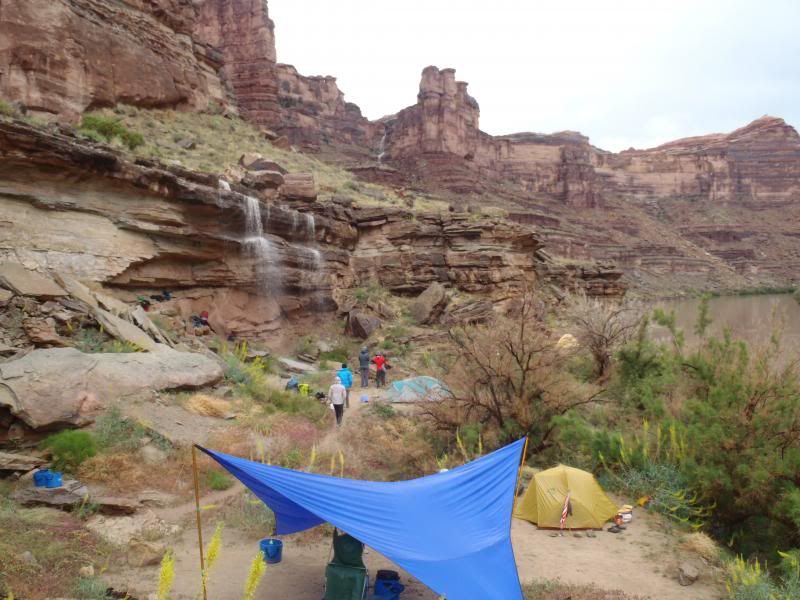
Yeah, those are all on river right. That is in part the lay of the land and where the bigger side canyons come in, as well as my preference for morning sun and afternoon shade.
Not a side canyon, and the ledge landing is awkward at low water, but Turks Head (mile 21, river right) has room high up top for 3 or 4 tents. (This is about 7 gauge feet at Turks Head; at 10 or 11 feet the ledge would be a step-out rock dock landing)


I have not camped at Jasper Canyon (mile 9,5, also river right). I’ve always gone another couple miles down to Water/Shot Canyon and hoped there was room at the inn.
I am trying to visualize the Green with another 6 feet of water. I have no idea how much faster the flow, but over 10 feet might actually open up
more of the usually dry mouthed side canyons (especially on river left) and old oxbows for easier off-river landing. If there is a stand of Cottonwoods there is probably dry open space to camp.
Sostokedly, the best source of high water information is probably the guys at Tex’s or Tagalong, or whoever is doing your shuttle. The Green is their bread and butter (especially Tex’s) and they have been sending folks out with risk of rental equipment loss for decades. I would trust their high water risk assessment and advice.
 We just want more feedback and information to try to make a good decisions from.
We just want more feedback and information to try to make a good decisions from.










